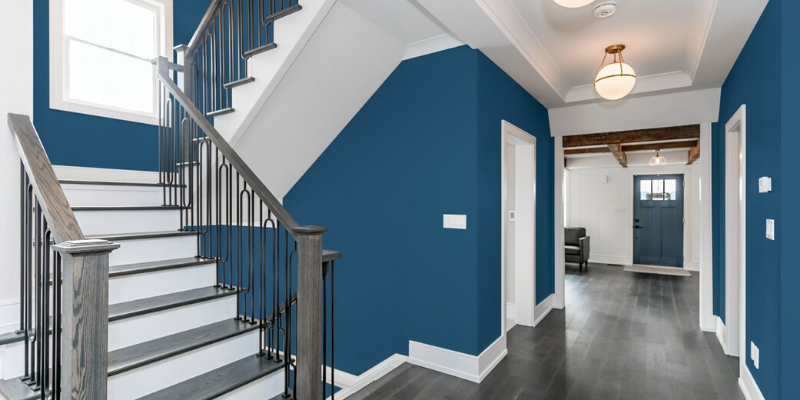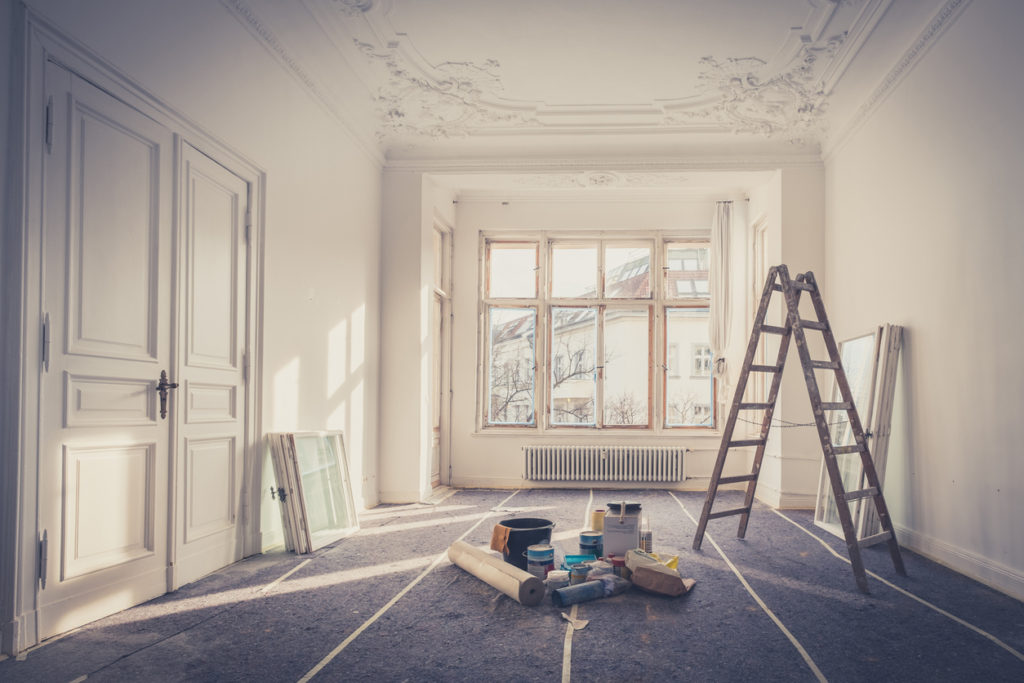Enhance Your Interior Decoration With Comprehensive Color Examination
The assimilation of shade examination into interior layout provides a distinct opportunity to improve and boost the aesthetic and emotional resonance of a room. By engaging with a seasoned shade specialist, you can navigate the complexities of color option, ensuring that your selections not only enhance architectural features yet likewise resonate with individual style and emotional impact.
Advantages of Color Appointment

Moreover, color assessment help in making the most of natural light and enhancing spatial assumption. Lighter tones can make an area appear more large, while darker tones develop an intimate setup. Cleveland Metro Painting Specialists. This strategic application of color can dramatically affect the total setting of any kind of indoor room
In addition, professional experts have a thorough understanding of classic classics and current patterns, making certain that the chosen colors will certainly remain attractive with time. This insight can conserve clients from expensive redesigns in the future. Lastly, shade consultation empowers customers by giving them with a clear vision and instructions, promoting confidence in their style options and ultimately leading to an extra successful and satisfying indoor style outcome.
Understanding Shade Psychology
The importance of shade psychology in interior layout can not be overemphasized, as it looks into the mental and psychological impacts that different shades can stimulate in individuals. Shades can affect mood, behavior, and also productivity, making them a critical consideration in any style task.
For example, cozy colors such as red, orange, and yellow are often connected with power and warmth. They can promote feelings of enjoyment and convenience, making them suitable for social areas like living cooking areas or rooms. Conversely, great colors like blue, eco-friendly, and purple often tend to evoke calmness and harmony, making them optimal for rooms or meditation areas.
Furthermore, making use of neutral tones can develop a well balanced atmosphere by permitting the bolder shades to stand apart without frustrating the detects. Recognizing these psychological impacts allows developers to develop spaces that not only look aesthetically pleasing however also advertise psychological health.
Including color psychology into interior design includes a thoughtful choice of tones customized to the designated function of each space, eventually improving the total experience for its owners. This awareness is critical for achieving a harmonious and practical interior environment.
The Color Wheel Described
It comprises primary shades-- red, blue, and yellow-- that can not be produced by blending various other colors. Tertiary colors result from blending a primary and a second shade, leading to hues such as green and red-orange.
The shade wheel aids designers comprehend the connections in between colors, consisting of corresponding, comparable, and triadic systems. Complementary colors, located opposite each other on the wheel, develop vibrant contrasts that can stimulate a room.
Utilizing the color wheel in interior style not just enhances aesthetic charm yet also stimulates details emotions and environments, making it a crucial recommendation for shade consultation. Understanding these connections inevitably encourages designers to create areas that are both visually fascinating and useful.
Picking the Right Palette
Typically, choosing the appropriate scheme is a decisive consider accomplishing a successful interior decoration task. An appropriate color design can link a room, boost its features, and stimulate desired feelings. To start, think about the objective of the area. Various rooms offer web different features and need combinations that show their designated use; as an example, peaceful colors such as soft blues or greens work well in bedrooms, promoting leisure.
Light can dramatically modify exactly how shades appear, so it is important to analyze the space at different times of the day. An unified palette needs to match these attributes, producing a natural look throughout the room.
When choosing shades, use the 60-30-10 rule, which suggests that 60% of the room ought to be a leading shade, 30% a secondary color, and 10% an accent shade. This ratio makes certain balance and aesthetic interest (Cleveland Metro Painting visit this site right here Specialists). Sample shades on the wall surfaces before dedicating, as this permits you to see how the colors connect with one another and the general setting they create in your indoor layout task.
Collaborating With a Shade Consultant

When collaborating with a shade consultant, the process normally starts with a first assessment. During this conference, you'll discuss your vision, choices, and the existing elements in your room. The expert will certainly examine your needs and may recommend particular shade combinations that straighten with your goals.
After establishing an instructions, the consultant will certainly offer samples and aesthetic help to aid you envision the recommended color pattern. This action is crucial, as shades can appear in a different way under differing lights problems.
In addition, a color expert can direct you in selecting complementary home furnishings, artwork, and devices to integrate with your selected combination. By working together carefully, you can achieve a refined aesthetic that raises your interiors and develops a welcoming atmosphere. Eventually, the expertise of a color expert can dramatically improve the general impact of your style job.
Final Thought
In summary, extensive shade appointment offers as an essential tool for boosting interior style. By leveraging professional understanding of color psychology and spatial characteristics, a tailored color palette can be established to evoke certain emotions and develop a harmonious atmosphere.
By engaging with a skilled shade expert, you can browse the intricacies of color option, making certain that your choices not just enhance architectural attributes but additionally resonate with personal style and psychological effect. It comprises key find this colors-- red, blue, and yellow-- that can not be produced by mixing various other colors.The color wheel aids designers understand the relationships between colors, consisting of corresponding, similar, and triadic plans.When picking colors, make use of the 60-30-10 regulation, which recommends that 60% of the room must be a leading shade, 30% an additional color, and 10% an accent shade. By leveraging specialist expertise of color psychology and spatial dynamics, a tailored shade scheme can be created to evoke certain emotions and create an unified environment.